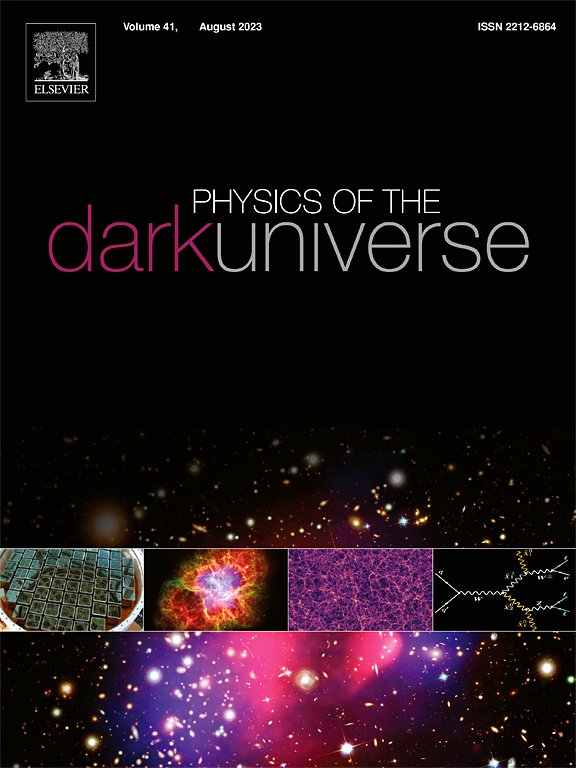Exploring effective force, trajectories, QPOs and center-of-mass energy around a black hole surrounded by pseudo-isothermal dark matter halo
IF 5
2区 物理与天体物理
Q1 ASTRONOMY & ASTROPHYSICS
引用次数: 0
Abstract
In this work, we analyze the motion of test particles around a spherically symmetric non-rotating black hole embedded in a pseudo-isothermal dark matter halo, investigating how the black hole mass , central halo density and core radius influence particle dynamics. We have used the effective potential approach to evaluate the stability of circular orbits, derive analytical formulas for the specific energy and angular momentum of the test particles, and calculate the innermost stable circular orbit as well as the effective force functioning on the particles. To gain a deeper understanding of orbital behavior, we employ numerical integration to simulate and visualize particle trajectories in the vicinity of the black hole. In addition, we explore epicyclic oscillations near the equatorial plane, derive expressions for radial, vertical, and orbital frequencies, which give some information about motion as perceived by both local and distant observers. Moreover, we have tested the precession of the periastron and evaluated the influence of model parameters on this relativistic phenomenon. We have analyzed high-energy particle collisions within this type of black hole, from which we can easily formulate an analytical equation for the center-of-mass energy. In this context, our results demonstrate that the combined effects of the black hole and the surrounding dark matter halo significantly alter the motion of test particles, influencing their stability, orbital evolution, and collision dynamics.
探索被伪等温暗物质晕包围的黑洞周围的有效力、轨迹、量子点和质心能量
在这项工作中,我们分析了嵌入在伪等温暗物质晕中的球对称非旋转黑洞周围的测试粒子的运动,研究了黑洞质量M、中心晕密度ρ0和核心半径R0如何影响粒子动力学。我们用有效势法评价了圆轨道的稳定性,推导了测试粒子的比能量和角动量的解析公式,并计算了最内层稳定的圆轨道以及作用在粒子上的有效作用力。为了更深入地了解轨道行为,我们采用数值积分来模拟和可视化黑洞附近的粒子轨迹。此外,我们探索了赤道平面附近的行星周期振荡,推导了径向、垂直和轨道频率的表达式,这些表达式给出了本地和远程观测者感知到的一些运动信息。此外,我们还测试了星周的进动,并评估了模型参数对这一相对论性现象的影响。我们已经分析了这种类型黑洞中的高能粒子碰撞,从中我们可以很容易地推导出质心能量的解析方程。在这种情况下,我们的研究结果表明,黑洞和周围暗物质晕的联合作用显著地改变了测试粒子的运动,影响了它们的稳定性、轨道演化和碰撞动力学。
本文章由计算机程序翻译,如有差异,请以英文原文为准。
求助全文
约1分钟内获得全文
求助全文
来源期刊

Physics of the Dark Universe
ASTRONOMY & ASTROPHYSICS-
CiteScore
9.60
自引率
7.30%
发文量
118
审稿时长
61 days
期刊介绍:
Physics of the Dark Universe is an innovative online-only journal that offers rapid publication of peer-reviewed, original research articles considered of high scientific impact.
The journal is focused on the understanding of Dark Matter, Dark Energy, Early Universe, gravitational waves and neutrinos, covering all theoretical, experimental and phenomenological aspects.
 求助内容:
求助内容: 应助结果提醒方式:
应助结果提醒方式:


